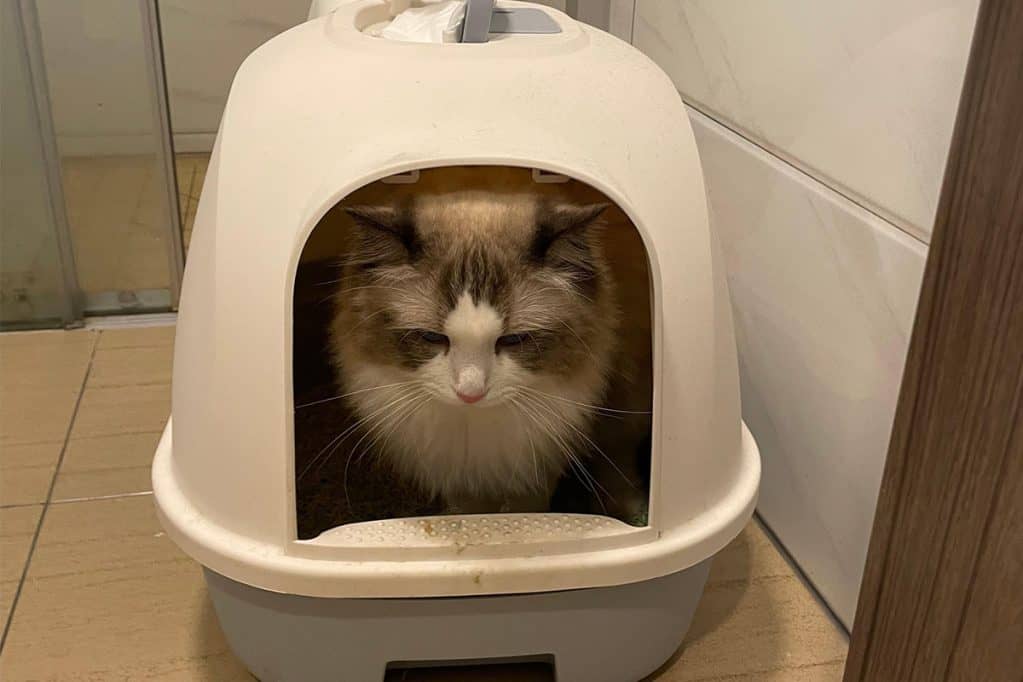In daily cat care, observing your cat’s poop is not just about cleaning up—it’s a vital window into your pet’s health. Many pet owners may not realize that a cat’s feces reveal important information about its digestive system, nutrient absorption, and overall wellbeing. This article will detail the “golden standard” for normal cat poop and help you identify key indicators of your cat’s health.
1. The Normal Appearance of Cat Poop
A healthy cat’s poop is one of the most important indicators of its well-being. Typically, normal cat poop appears in one of two forms:
• Firm, Segmented Form:
The poop has clearly defined dry ridges on the surface but isn’t overly hard, leaving little to no residue when scooped. This indicates that the cat’s digestive system is functioning well with an appropriate intake of water and fiber.
• Cylindrical (Log-shaped) Form:
The surface is moist with fewer ridges, and while some residue may remain during cleaning, the shape is generally maintained. This also reflects a normal digestive process with proper intestinal function and nutrient absorption.
If the poop appears abnormal—such as being overly hard in clumps, unformed and mushy, or watery—this may signal health issues. Hard clumped stool often suggests dehydration or constipation, while unformed or watery stool could be a sign of indigestion, intestinal inflammation, or parasite infection.
2. Color and Texture: Health Signals
Color:
• Normal:
A healthy cat’s poop is usually brown or dark brown.
• Abnormal:
• Black: May indicate gastrointestinal bleeding.
• Green: Could be a sign of imbalanced gut flora or bacterial gastroenteritis.
• Green: Could be a sign of imbalanced gut flora or bacterial gastroenteritis.
Texture:
• Normal stool should be soft yet well-formed.
• If the poop is too hard or dry, it might be due to insufficient water or fiber in the diet.
• If it’s too soft or watery, this might indicate intestinal disease or poor digestion.
3. Odor and Frequency
Odor:
Under normal conditions, cat poop has a certain odor but should not be overly pungent or foul. An abnormal smell may suggest digestive issues or intestinal problems.
Frequency:
• Generally, a healthy adult cat should pass stool at least once a day.
• Kittens, due to their faster metabolism, may defecate 2-4 times a day.
• A sudden change in frequency—either significantly more or less than usual for more than two days—could be a sign of health concerns.
4. Factors Affecting Your Cat’s Poop
The appearance and quality of a cat’s poop can be influenced by several factors, including but not limited to:
• Age: Kittens tend to defecate more frequently, and their stool may be softer.
• Diet: What your cat eats has a direct impact on its stool. A diet rich in fiber and protein helps form healthy poop, while a low-fiber, high-fat diet may lead to constipation or soft stool.
• Exercise: Adequate physical activity promotes intestinal motility, contributing to normal bowel movements. Cats with little exercise are more prone to constipation.
• Gastrointestinal Health: Conditions like enteritis, hyperthyroidism, pain, intestinal parasites, or chronic kidney disease can affect both the frequency and the consistency of stool.
• Medications: Certain medications may influence the speed of intestinal motility, thus affecting stool consistency and frequency.
5. Practical Tips to Maintain Healthy Cat Poop
To help your cat maintain normal, healthy stool, consider the following measures:
1. Encourage Hydration:
Ensure your cat always has access to fresh water. Consider changing the water fountain or adding more water stations around the house to help prevent constipation and dehydration.
2. Provide a Balanced Diet:
Offer a diet that includes high-fiber and high-protein cat food, and avoid low-fiber, high-fat options that could lead to constipation or loose stools.
3. Increase Exercise:
Use toys like cat wands or laser pointers to encourage physical activity. Exercise promotes intestinal movement and helps form healthy poop.
4. Supplement with Probiotics:
Given that cats can have relatively delicate digestive systems, appropriate probiotic supplements can improve intestinal motility and aid in digestion.
5. Regular Deworming:
Schedule regular deworming sessions to prevent parasitic infections that could negatively impact intestinal health.
Conclusion
Cat poop is more than just a cleaning chore—it’s the “golden standard” that reflects your cat’s health. By observing the appearance, color, texture, odor, and frequency of your cat’s stool, you can detect potential health issues early and take timely action through dietary adjustments, increased exercise, and necessary medical interventions. We hope this guide helps you better understand your cat’s wellbeing and encourages you to take proactive steps so that your feline always “meets the standard” for a healthy life.


